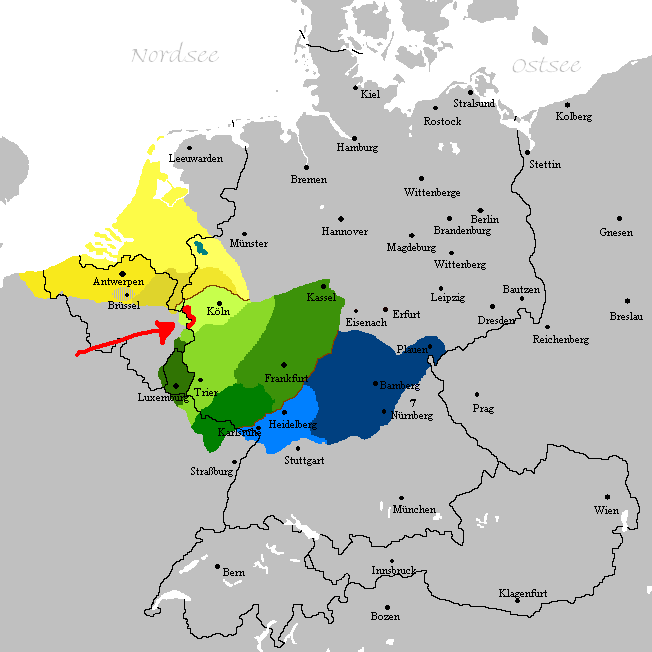For reference: the baths in the city were destroyed exactly a hundred years later, in 375 CE. So odds are that the fort was mildly effective to keep the barbarians out.
And by “barbarians” I mean likely Franks. In the long term… well.

This is a map of the Franconian dialects. I edited it to show Aquae Granni / Aachen, right in the middle. “Franconian”, “Frankish”, you should get the picture.
If something works for more than a lifetime, I wouldn’t call it mildly effective.
In addition to the wall, archaeologists found shards of pottery and animal bones at the site
Clearly, the only conclusion accounting for all the evidence is that the wall was built to keep the animals from getting into the pottery.
Did it work?
Odds are that the fort worked rather well in the short term, and that Aquae Granni / Aachen fell for logistic reasons.
Context: the Roman Empire was a mess back then, being split twice (by Diocletan then Constantine), between the fort being built and the city falling for tribals. Couple that with Aquae Granni being mostly a vacation town in the middle of nowhere, and why it fell becomes clear - “too low priority, we aren’t sending supplies there, let the citizens fend off themselves against the bar-bar-bar”.
From the article:
But what we know is that it works. We have no indication of any big destruction after the castrum was built.
deleted by creator
Do they speak German in Germany?
Well yeah.






